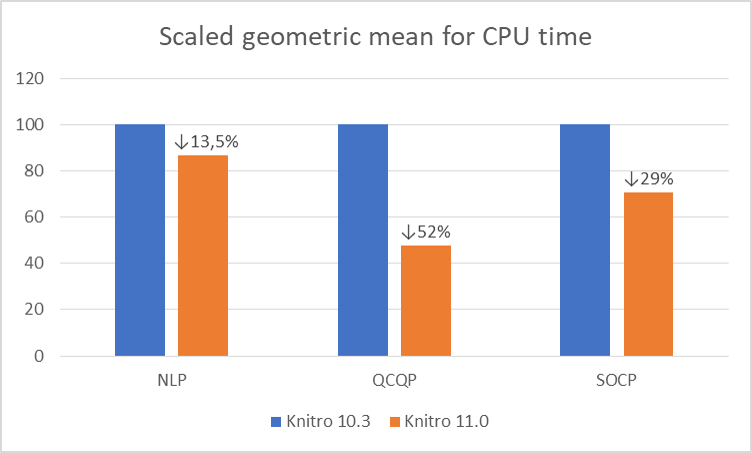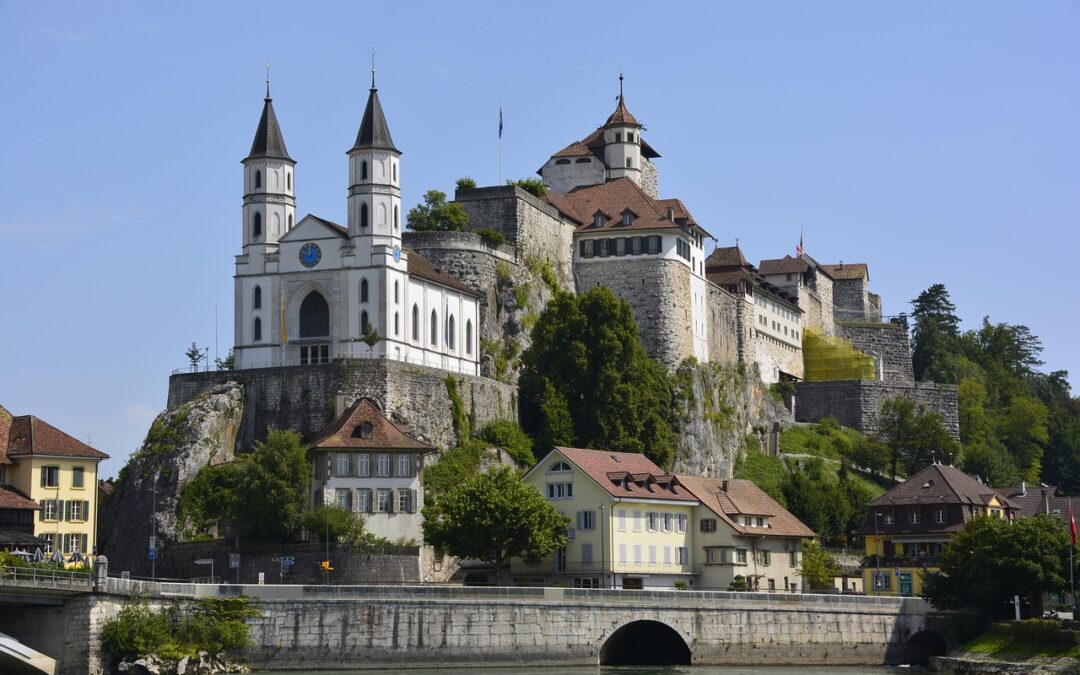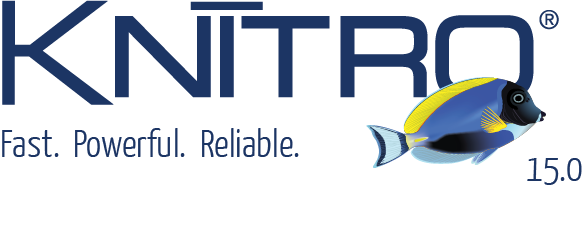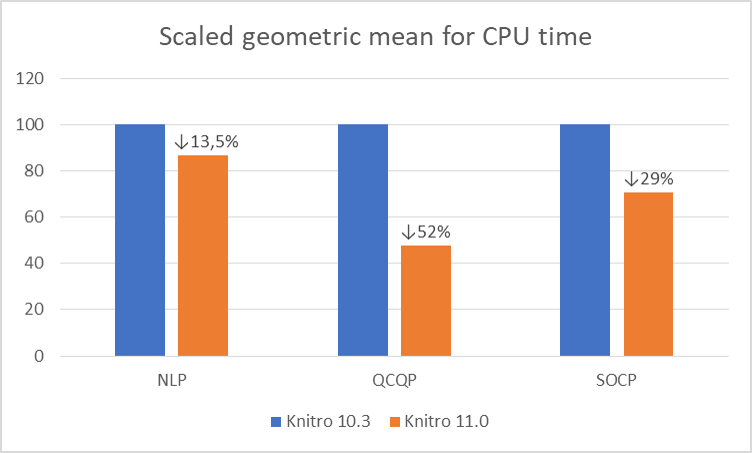Artelys Knitro 11: New SOCP algorithm!
This version comes with a redesign of the C API improving flexibility when manipulating your models. The user can directly provide the constraint structure (e.g. linear, quadratic, quadratic conic) to the solver without using callback functions. It is also possible to provide derivatives for only a subset of the model, Knitro being able to automatically approximate the missing derivatives.
Artelys Knitro intègre désormais une spécialisation algorithmique permettant de gérer efficacement les contraintes quadratiques coniques, présentes dans les modèles SOCP que l’on retrouve dans de nombreuses applications (l’économie, la physique, la finance …). Cette évolution majeure pour les problèmes SOCP s’accompagne d’une amélioration notable des performances sur les problèmes QCQP.

Other features
• CG preconditioning now available for all classes of problems
• New parallel linear solvers (HSL MA86 and MA97) allowing speedups on large scale problems
• The Knitro R interface is now open source
• Several enhancements of the MINLP and active-set algorithms
• General performance improvements in particular for convex problems

Swissgrid selects Artelys Crystal Super Grid
Artelys is pleased to announce that Swissgrid, the Swiss electricity Transmission System Operator (TSO), has selected Artelys Crystal Super Grid, our multi-energy simulation solution, to support their strategic planning and system analysis activities.

Artelys led the Assessment of Policy Options for Securing Inertia for the European Commission
The European Commission’s Directorate-General for Energy (DG ENER) selected Artelys (leader), Trinomics, and Tractebel ENGIE to study solutions for ensuring the future frequency stability of the European power system. The study report was published in August 2025 by...

Artelys Knitro 15.0: New Tools for Your Large-Scale Models
Artelys is pleased to announce the release of Knitro 15.0, which provides new algorithms and performance improvements to solve your large-scale optimisation problems, whether linear or non-linear, more quickly.

Artelys Introduces Future Sight: a Visualisation Tool Supporting the Energy Transition
As partner in the European Climate + Energy Modeling Forum (ECEMF) – a Horizon 2020 Europe project uniting research institutes and leading energy modellers in Europe – Artelys has contributed to modeling activities powered by Artelys Crystal Super Grid modelisation tool, and has led the development of a fully-fledged visualisation tool.
subscribe to our newsletters
© ARTELYS • All rights reserved • Legal mentions
